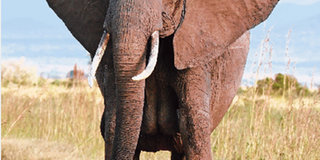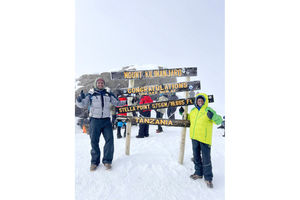OPINION AND ANALYSIS: Why Conservation trophy in 2016 Ejat is significant

What you need to know:
Prior WWF’s entry, the category was being sponsored by Tanzania National Parks (Tanapa).
The WWF, Tanzania Office, participated for the first in the 2016 Excellence in Journalism Award Tanzania (Ejat) as sponsors of the Conservation Category.
Prior WWF’s entry, the category was being sponsored by Tanzania National Parks (Tanapa).
The withdraw of Tanapa in 2015 provided an opportunity for WWF, Tanzania Office, to step in and fill in the gap. To cap that, was the arrival to Tanzania WWF of senior official—
Director of the Nairobi based WWF Regional Office-Africa (ROA), Mr Fred Kwame Kumah.
Mr Kumah would later in the week present the winner of the Ejat Conservation Category, to Mr Peter Nyanje, a senior journalist with The Citizen.
Mr Nyanje’s article was titled, ‘Search for economic benefits threatens Selous Game Reserve’.
The article was very significant for the WWF here in that it could rightly be described as the third first for the Dar es Salaam’s WWF Tanzania Office.
In October last year, Mr Njanje was one of the eight journalists who had been sponsored by WWF, Tanzania Office, for a five-day tour of the Selous Game Reserve.
The main objective of the tour which started on October 26 was to provide journalists with an insight into the importance of the Selous Game Reserve in conservation and tourism.
Every day, for five days, the journalists who had been accommodated at the River Lodge, located deep in the forest close to the Stiegler’s Gorge, were able to criss-cross the northern part of the game reserve renowned across the world for its photographic tourism allure, to view wild animals.
In terms of tourism which is presently Tanzania’s leading foreign exchange earner, raking in $2 billion (Sh4.4 trillion), the Selous earns $6 million (Sh13.2 billion), most of which come from the northern part of the game reserve where the eight journalists toured.
The highlight of their visit was arguably the sighting, more than three times, of large herds of elephants accompanied by their calves.
The sighting of large herds of elephants along with their calves was very significant to the journalists. Why, the presence of many elephant calves provided massive evidence of the good work that had been done in less than a year by the fifth phase government of Dr John Magufuli in fighting poaching, not only in the Selous, but in the entire country.
The journalists would not have spotted those elephant calves if poaching within the Selous was still rife.
For according to experts, elephants are very sensitive animals with very strong memory which once threatened, they stop procreation.
The presence of a large number of elephant calves reflected the return of tranquility in the Selous after the government’s commendable anti-poaching effort.
It is important to note that the Selous was the most affected by poaching in Tanzania where at one time, killing of 10 jumbos daily was normal.
To understand how serious industrial poaching was in the Selous it is prudent to take a glance at the state of the reserve in 1976.
According to available statistics, in 1976, the reserve had 110,000 elephants and substantial numbers of rhino and wild dogs. In fact, it was the presence in the reserve of the three animal species, among others, that would drive the government to seek the inscription by Unesco of the Selous as a World Heritage Site.
The uniqueness of the 55,000sqkm Selous Game Reserve (which is bigger than Burundi, Rwanda and Zanzibar combined), in terms of its majestic meandering of its rivers, that includes the Rufiji River, riverine forests, ox-bow lakes and massive population of wild animals in their natural habit, convinced Unesco to elevate it to a World Heritage Site title in 1982.
However, four decades later, elephant population in the reserve would be depleted through industrial poaching by 90 per cent, from 110,000 to 15,000.
The shocking depletion of elephant population in the reserve would in 2014, force Unesco place the Selous in the list of endangered World Heritage Sites.
But since the reserve was inscribed as a World Heritage, a lot of developments have either taken place or are on the cards. For instance, apart from industrial poaching, the Selous presently include new activities that could endanger the reserve.
The industrial developments include the planned uranium mining at the Mkuju River, an area which was sliced off from the Selous, through the permission of Unesco in order to allow uranium mining.
Other industrial projects include the planned Kidunda Water Dam and the planned hydro-power project on the Stiegler’s Gorge.
The other activities in the property include continued exploration of oil and gas.
Therefore, when Mr Nyanje wrote his award winning article, which went on to clinch the 2016 Ejat trophy, he actually had in mind industrial development project.
They may also have a negative impact on the Selous Game Reserve through the alteration of the reserve’s outstanding universal values, hence consigning the property to the endangered list of World Heritage Sites.
Attilio Tagalile is a media consultant, journalist and author based in Dar es Salaam




